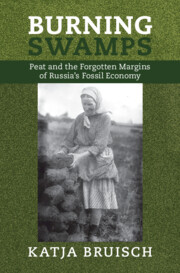Refine search
Actions for selected content:
616368 results in History
Commemorating Irma Bandiera and the women of the Resistance: the monumental memoryscape of Bologna
-
- Journal:
- Modern Italy , First View
- Published online by Cambridge University Press:
- 08 September 2025, pp. 1-17
-
- Article
-
- You have access
- Open access
- HTML
- Export citation
Translating French mathematics and lobbying the horse-drawn carriage trade (USA, 1869–1877)
-
- Journal:
- Science in Context , First View
- Published online by Cambridge University Press:
- 08 September 2025, pp. 1-26
-
- Article
- Export citation
Paul Ginsborg and the Historiography of Modern Italy. Revolutions, Revolt and Resistance edited by John Foot and Stephen Gundle, Cham, Palgrave Macmillan, 2024, xvii +313 pp., £139.99 (hardback), £140.50 (paperback), £111.50 (ebook), ISBN 978-3-031-54021-9.
-
- Journal:
- Modern Italy , First View
- Published online by Cambridge University Press:
- 08 September 2025, pp. 1-2
-
- Article
- Export citation

Burning Swamps
- Peat and the Forgotten Margins of Russia's Fossil Economy
-
- Published online:
- 06 September 2025
- Print publication:
- 25 September 2025

The Arab Spring
- Ten Years On
-
- Published by:
- Gerlach Press
- Published online:
- 05 September 2025
- Print publication:
- 30 June 2022

Iranian/Persianate Subalterns in the Safavid Period
- Their Role and Depiction: Recovering 'Lost Voices'
-
- Published by:
- Gerlach Press
- Published online:
- 05 September 2025
- Print publication:
- 30 June 2022
Intra-State Conflicts and the Politics of Aid in Europe, 1917–49: An Introduction
- Part of
-
- Journal:
- Contemporary European History , First View
- Published online by Cambridge University Press:
- 05 September 2025, pp. 1-9
-
- Article
-
- You have access
- Open access
- HTML
- Export citation
The International Chamber of Commerce and the Creation of a Pan-European Economic Space During the Cold War
-
- Journal:
- Contemporary European History , First View
- Published online by Cambridge University Press:
- 05 September 2025, pp. 1-17
-
- Article
-
- You have access
- Open access
- HTML
- Export citation
Robert D. Koch, Juan Perón’s Anti-imperialist Geopolitics: A New Order for the Cold War World Bloomsbury Academic London, 2024, pp. 275
-
- Journal:
- Journal of Latin American Studies , First View
- Published online by Cambridge University Press:
- 05 September 2025, pp. 1-3
-
- Article
- Export citation
Technology, labour, livestock, and the Maoist developmental state: Four-wheeled tractors in China, 1953–1963
-
- Journal:
- Rural History , First View
- Published online by Cambridge University Press:
- 05 September 2025, pp. 1-20
-
- Article
-
- You have access
- Open access
- HTML
- Export citation
The Nazi Financial Order: Banking Law and the Credit Supervisory Office in Germany and Austria
-
- Journal:
- Central European History , First View
- Published online by Cambridge University Press:
- 05 September 2025, pp. 1-27
-
- Article
-
- You have access
- Open access
- HTML
- Export citation
Emerging infectious disease outbreaks and real-time health communication: intermediality, uncertainty and dissent
-
- Journal:
- The British Journal for the History of Science , First View
- Published online by Cambridge University Press:
- 05 September 2025, pp. 1-17
-
- Article
-
- You have access
- Open access
- HTML
- Export citation
Colours, humours and material change in late Renaissance chymistry and medicine
-
- Journal:
- BJHS Themes , First View
- Published online by Cambridge University Press:
- 05 September 2025, pp. 1-20
-
- Article
-
- You have access
- Open access
- HTML
- Export citation

The Colonial Way of War
- Violence and Colonial Warfare in the British, German and Dutch Empires, c.1890–1914
-
- Published online:
- 04 September 2025
- Print publication:
- 21 August 2025
Index
-
- Book:
- The Wars of the Roses
- Published online:
- 24 July 2025
- Print publication:
- 04 September 2025, pp 296-304
-
- Chapter
- Export citation
Tables
-
- Book:
- Gold in India
- Published online:
- 26 September 2025
- Print publication:
- 04 September 2025, pp xiii-xiv
-
- Chapter
- Export citation
Frontmatter
-
- Book:
- Provincial Metropolis
- Published online:
- 25 September 2025
- Print publication:
- 04 September 2025, pp i-vi
-
- Chapter
- Export citation
Dedication
-
- Book:
- Resilient Communities
- Published online:
- 26 September 2025
- Print publication:
- 04 September 2025, pp v-vi
-
- Chapter
- Export citation
1 - City, Cinema, World: Film Industry in the Late Colonial Era
-
- Book:
- Film City Urbanism in India
- Published online:
- 26 September 2025
- Print publication:
- 04 September 2025, pp 15-60
-
- Chapter
- Export citation
Copyright page
-
- Book:
- The Wars of the Roses
- Published online:
- 24 July 2025
- Print publication:
- 04 September 2025, pp iv-iv
-
- Chapter
- Export citation
